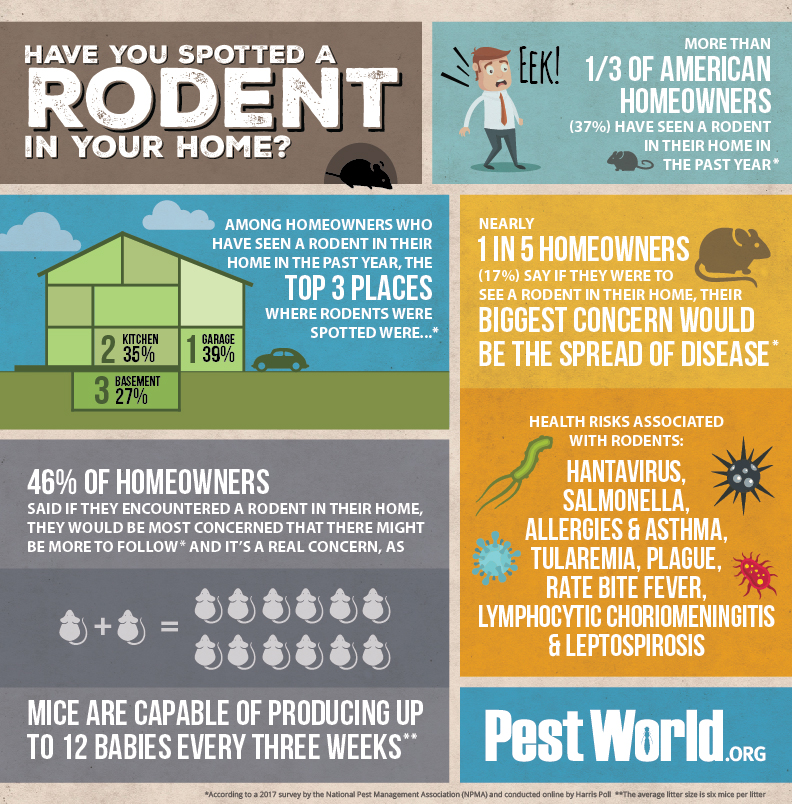Find Out Important Techniques For Securing Your Home From Rats In The Attic Room
Find Out Important Techniques For Securing Your Home From Rats In The Attic Room
Blog Article
Content Produce By-Thybo Degn
Picture your attic room as a relaxing Airbnb for rats, with insulation as fluffy as resort pillows and electrical wiring much more luring than area solution. Currently, envision these unwanted guests throwing a wild party in your home while you're away. As a house owner, ensuring your attic is rodent-proof is not almost satisfaction; it's about shielding your property and loved ones. So, what straightforward actions can you require to guard your haven from these fuzzy intruders?
Examine for Entrance Details
To begin rodent-proofing your attic room, evaluate for entry points. Begin by thoroughly taking a look at the outside of your home, seeking any kind of openings that rats can utilize to get to your attic. Look for voids around energy lines, vents, and pipes, as well as any fractures or holes in the structure or house siding. Make sure to pay close attention to areas where different structure materials satisfy, as these are common entrance points for rats.
Furthermore, inspect the roof for any kind of damaged or missing shingles, in addition to any kind of voids around the edges where rats could press with. Inside the attic room, seek signs of existing rodent activity such as droppings, chewed wires, or nesting materials. Make use of a flashlight to extensively check dark edges and concealed rooms.
Seal Cracks and Gaps
Inspect your attic completely for any splits and voids that need to be sealed to prevent rodents from getting in. Rats can press via also the tiniest openings, so it's important to secure any kind of possible access points. Check around pipelines, vents, wires, and where the walls satisfy the roofing system. Use a combination of steel woollen and caulking to seal off these openings successfully. Steel woollen is a superb deterrent as rodents can't eat through it. Guarantee that all gaps are tightly secured to deny access to unwanted insects.
Do not neglect the importance of securing voids around windows and doors as well. Use climate stripping or door moves to seal these locations efficiently. Inspect the locations where utility lines get in the attic room and seal them off making use of a suitable sealant. By putting in please click the next internet page to seal all cracks and voids in your attic, you produce a barrier that rodents will locate difficult to violation. Avoidance is key in rodent-proofing your attic, so be extensive in your efforts to seal off any type of potential entrance points.
Eliminate Food Resources
Take proactive procedures to eliminate or keep all possible food resources in your attic room to deter rats from infesting the space. Rodents are brought in to food, so removing their food resources is important in keeping them out of your attic room.
Right here's what you can do:
1. ** Store food securely **: Prevent leaving any kind of food things in the attic room. Shop all food in closed containers made of steel or sturdy plastic to avoid rats from accessing them.
2. ** Tidy up debris **: Eliminate any type of heaps of debris, such as old papers, cardboard boxes, or wood scraps, that rats can use as nesting product or food sources. Keep the attic clutter-free to make it much less attractive to rodents.
3. ** Dispose of waste effectively **: If you utilize your attic room for storage space and have trash or waste up there, make certain to dispose of it frequently and effectively. Rotting trash bin attract rats, so maintain the attic tidy and free of any natural waste.
Conclusion
To conclude, bear in mind that an ounce of prevention deserves an extra pound of treatment when it concerns rodent-proofing your attic.
By making the effort to check for entrance factors, seal cracks and voids, and remove food sources, you can maintain undesirable insects at bay.
Remember, 'An ounce of prevention is worth a pound of remedy' - Benjamin Franklin.
Remain positive and secure your home from rodent invasions.
